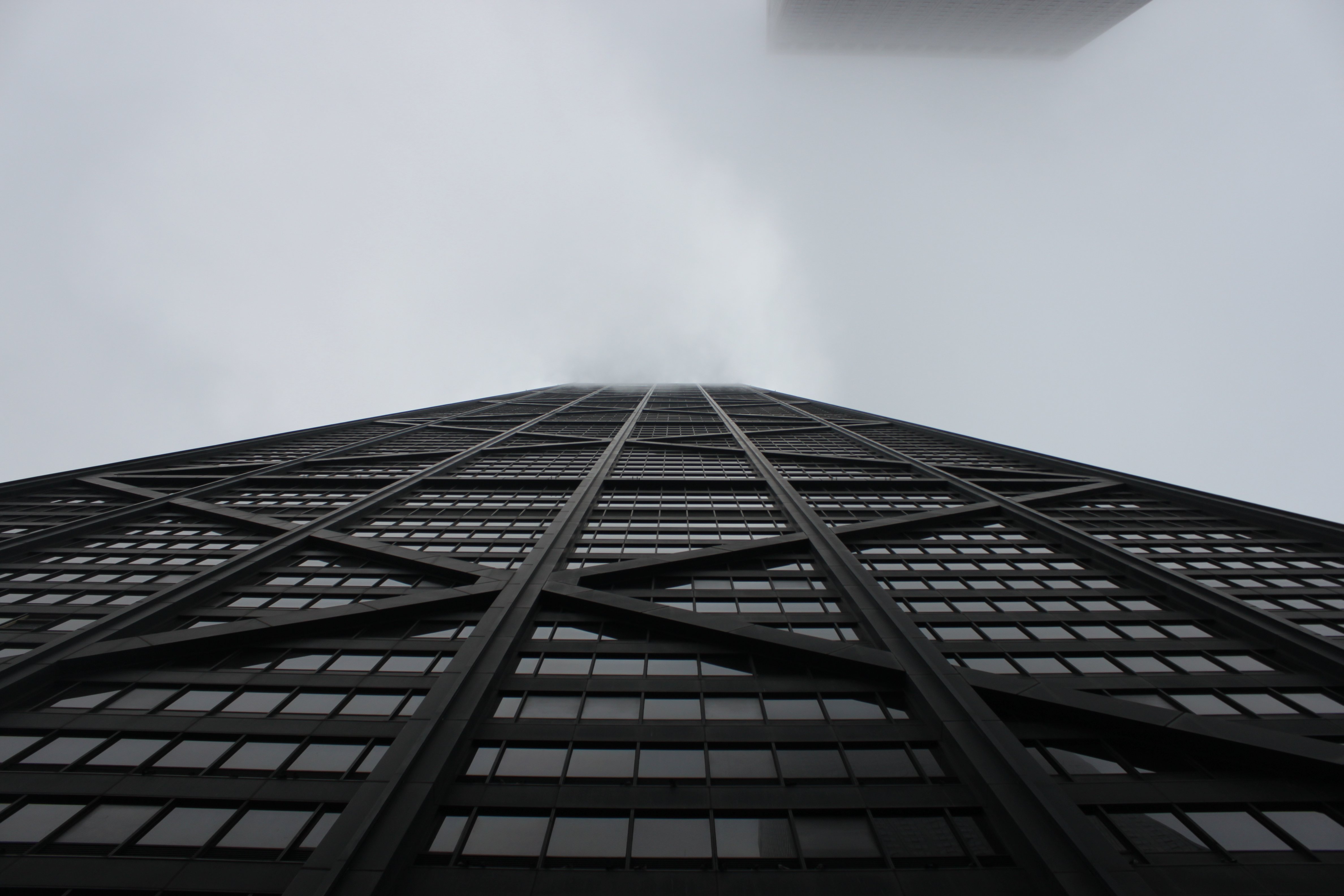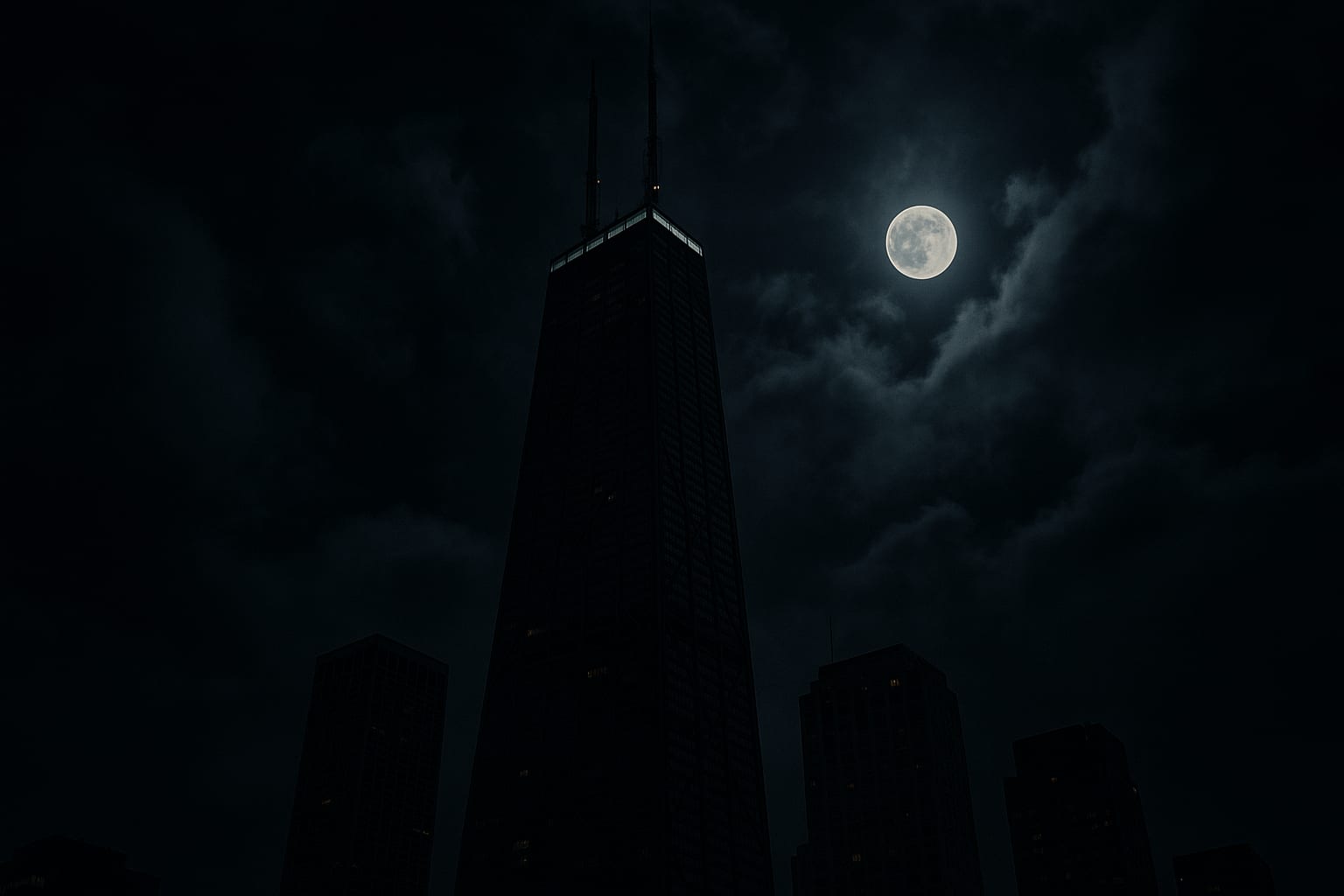Originally the second-tallest building in the world when it was first completed in 1969, this unique trapezoid tower is a true standout in Chicago's skyline with 100 floors of offices, condos, restaurants, and more.
It was named after the John Hancock Mutual Insurance Company, which funded it. Even though the business officially moved out in 2018, the name has stuck with locals.
The building however, has a dark side, from several strange deaths, to demonic energy, to an old curse on the land itself. Not to mention its connections to the supernatural in pop culture.
Did You Know?
- The John Hancock Center is the fifth tallest building in Chicago and the thirteenth tallest in the US.
- It was one of the filming locations for the 1988 film Poltergeist III.
- Actor and comedian Chris Farley was found dead from a drug overdose in his 60th-floor apartment in 1998.
- Church of Satan founder Anton LaVey wrote about the building's demonic nature in The Devil's Notebook.
Is the John Hancock Center Haunted?
It is indeed! Visitors and residents have long reported seeing shadowy figures on the upper floors, and hearing the murmurs of demonic voices. Some have said they even feel bizarre, not themselves, or even possessed from the moment they step inside.
Due to the building's unconventional shape, the outer walls don't rise at ninety degrees. These angles are "not harmonious with natural visual orientation," to quote LaVey, and not only "engender aberrant behavior," but straight up act as a doorway for diabolical occult forces.
Given the nature of the fatal incidents that have happened here, it may be somewhat accurate. And it all supposedly started with the escapades of a man named George Wellington "Cap" Streeter.
The Streeterville Curse
Born in Flint, Michigan in 1837, George Streeter was a Civil War veteran who held quite a few odd jobs, such as being the owner of a traveling circus, before borrowing money to build a 35-ton steamship he named the Reutan and setting sail on Lake Michigan in July of 1886.
As he claimed, a sudden bad storm had blown in and practically ran him aground on a sandbar off the Chicago shore. Leaving the vessel where it lay, he declared the spot and the area around it as the independent "District of Lake Michigan" and claimed ownership.
He acquired more land when contractors continued to use the space as a dump for sand, silt, rubble, and other backfill material. It made 186 acres from which he then made lots, began selling deeds to those lots, and taxing those who bought them.
The area and the neighborhood around it became known as Streeterville. Streeter also built a shack on the site where the John Hancock Center would eventually sit.
As it turned out, Cap didn't own a thing, and the real owners of the dumped infill were the Lincoln Park Board, which had been planning the construction of Lake Shore Drive there. They and many of those who owned property along the Chicago shore tried to get Streeter and his new band of squatters removed.
Cap fervently defended his claim using a very outdated map, a forged land title, and ultimately, bullets. He was put on trial for fraud in 1902, but the case was dropped due to a technicality, and the battle for Streeterville continued.
Streeter was finally evicted in December 1918, and his shack was burned to the ground. He took to living in a new houseboat he called the Vamoose, which he docked at Navy Pier. He lived there in relative peace, though still enraged at the city for what it had done to him.
As he lay dying of pneumonia three years later, he said, "I curse ye all!"
Now, no one took it all too seriously, and most people barely remembered Streeter until news broke of an incident in the early morning hours of August 12, 1971.
Lorraine Kowalski & the Broken Window
Lorraine Kowalski lived with her boyfriend, Marshall Berlin, in his apartment on the 90th floor of the John Hancock Center. On August 11, 1971, Berlin went out to dinner with another woman while Kowalski went clubbing with a friend of hers.
Around 3:30 a.m., Lorraine returned to the apartment. Marshall returned minutes later, and the two got into a very volatile argument and, in the middle of it, Berlin retreated to the bathroom. When he came out at around 4:10 a.m., he found Kowalski gone and the bedroom window completely shattered.
Marshall quickly called the police. They found her body on the street, still covered in glass shards. He claimed she'd threatened to commit suicide, and no charges were filed.
However, whether or not Berlin was telling the truth was overshadowed by the sheer fact that Lorraine had managed to break through the window at all. As part of the Hancock's windproofing, the glass had been double-paned, capable of withstanding 280 pounds of pressure per square inch.
So, without using any other means, how had the 130-pound Kowalski broken through it so easily and thoroughly, especially in her inebriated condition? It baffled the police and everyone else.
Since then, some have claimed to see the shadowy figure of Lorraine in the hallway on the ninetieth floor. She'll usually appear gliding quickly through the door to the apartment she and Marshall shared.
And More Mysterious Deaths
In 1975, a local radio station employee fell to his death from the 97th floor, albeit not through the window. Just three months later, a student also fell from his 91st-floor apartment. In 1978, a woman shot a man in her apartment on the 65th floor.
In 2002, a section of scaffolding on the 43rd floor fell suddenly, landing on eleven people, three of whom died.
These are quite possibly the other spirits that people have seen lurking around, even though the circumstances surrounding their deaths aren't entirely clear. Was it the curse kicking in, or something far more unearthly sinister?

History of the Hancock Center
It all began in 1964 with Pennsylvanian developer Jerry Wolman. His first idea was to buy two plots of land for two separate buildings: a 70-story office tower and a 45-story residential one. He purchased the first plot, but never managed to get his hands on the second.
Architect Bruce Graham and architect/engineer Fazlur Khan then helped Wolman rethink his vision and redesign a single building for residential and business purposes, which began construction the following year.
Despite a single trussed tower being more cost-effective, problems with the support columns and the concrete pouring wound up causing delays and redos that ultimately bankrupted Wolman.
The John Hancock Mutual Insurance Company then stepped in to finish the project.
The building's first resident was engineer Ray Heckla, who moved in with his family in 1968
The John Hancock Center Today
The building is open to the general public from 9 a.m. to 11 p.m., complete with tours and access to the 360 Chicago Observation Deck on its 94th floor. There's also a full bar with lots of locally stocked beer and spirits.
If you want to get a good look at downtown Chicago and maybe go ghost hunting while you are at it, head on down to 875 North Michigan Avenue the next time you're in the Windy City.

The towering skyscraper hiding tragic secrets

The observation deck where spirits still leap

